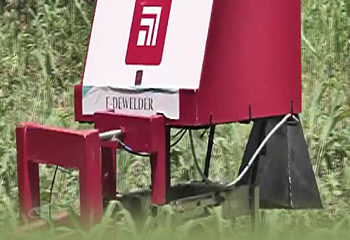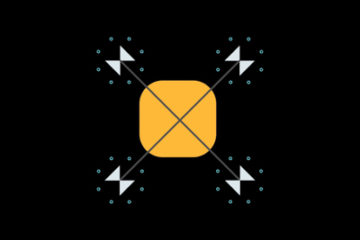Autofisker: A smart vehicle for precise farming

Broad domain – Automobile Engineering, Power management, Image Processing, Machine Vision, Processor implementations, Machine Intelligence/Learning, Rural business, rural community sales and marketing, 3-D vision processing
Focused domain – Image Processing and Farm mechanization
Autofisker is a clean energy driven vehicle for traversing the farm without disturbing the crops. The vehicle is autonomous and offers multiple farm mechanization activities like zero tillage and crop planting. Further, the expansion is envisaged towards RF solution to crop protection problems. The top down camera allow the creation of logs for real time conditions of the farm.
No. of intern positions available in the project – 02 (Engineering), 01 (Sales and Marketing), 01 (Logistics)
Principal Investigator:
Dr Nitin Saluja
Funding- External Project Start Date - 01/11/2017
E-Health Monitoring For Crop Disease Using Drone Technology (Non-Invasive Method Based On Pattren Recognition)

We are proposing a solution for developing a technique for automatic disease detection as well as spraying the pesticides automatically over the affected areas of the fields. The developed framework will not only empower the farmers to predict about the pest, disease and weed infestation, but will also be helpful for taking the preventive action by spraying the pesticides to avoid crop losses. With the help of this innovation/technique, farmers will also be able to monitor the condition of their crops remotely.
The target is achieved into two phases, first phase is to develop a unit for detecting the disease, which we named as ‘Disease detection Unit’ and in the second phase we will be providing the solution for the disease control with the help of Pesticide-Sprayer-Unit. These both units are implanted on unmanned aerial vehicle(drone).
For the first unit i.e ‘Disease detection Unit’, the innovation is making use of high end drones, equipped with multi-spectral or hyper-spectral Imaging (HSI) cameras. These drones fly over a crop for early detection and recording of the disease in the plant. The disease detection unit is loaded with a programmed microcontroller, which will take the input images captured by the HSI camera fitted in drone. The programmed microcontroller will do processing on the input images, detect and classify the type of disease with the help of machine learning and will send the information about the disease to Pesticide-Sprayer-Unit.
The Pesticide-Sprayer-UAV-drone will get the inputs from the disease detection unit about the type and severity of disease and will select the type and quantity of pesticide according to the disease. For this purpose the Pesticide-Sprayer will be loaded with two or three types of pesticides (Used for most common plant diseases) depending upon the crop. Based upon the type of disease (input from disease detection unit), it will spray the pesticides only over the areas where disease is detected. It also reports the farmer about the development of the disease over a period of time through a handheld device. With the help of this device, the farmer can also interact with the device to control the quantity of the disease.
This innovation will protect farmers from poisoning and heatstroke while utilizing harmful pesticides. From this 50-100 acres can be sprayed per day, which is 30 times more than the traditional spraying methods. 50% of pesticide saving is established by a selective atomization and 90% of water can be saved in comparison to traditional spraying methods. It is also not influenced by the terrain and crop height, has an ergonomic and innovative remote control, easily manages low altitudes flights and does not harm the crop.
Number of Interns required:
Embedded System Design : 01
Python programming: 01
Principal Investigator:
Dr Sheifali Gupta

